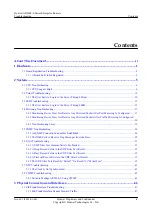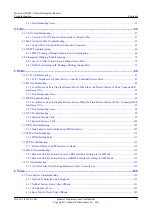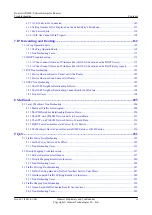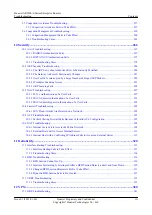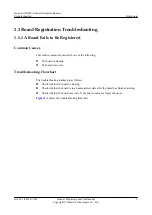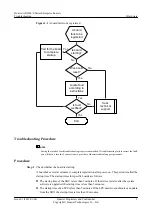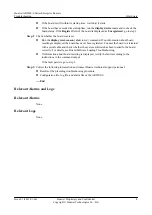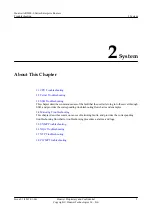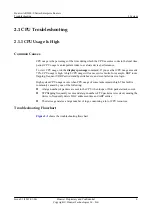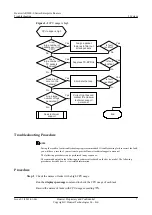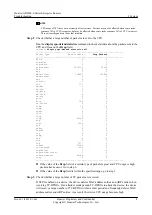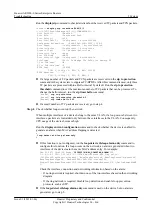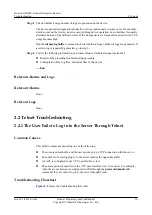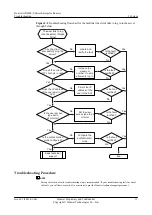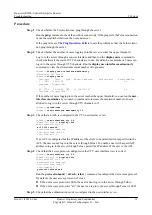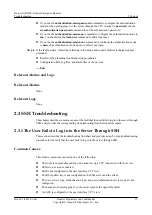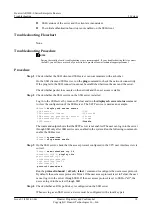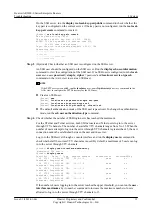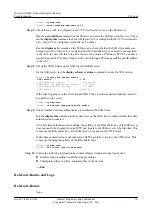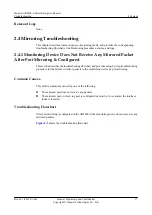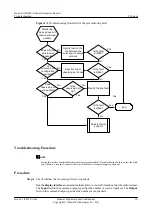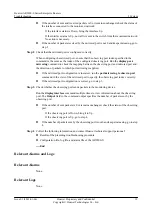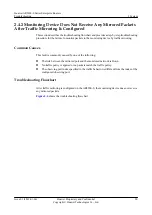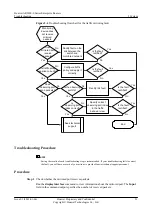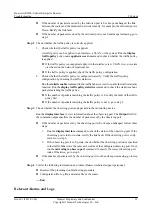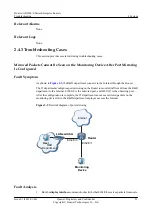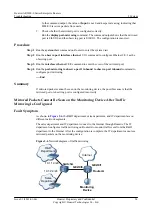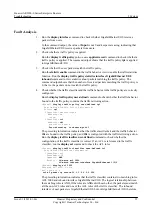
Step 5
Check whether a large number of logs are generated on the device.
The device generates diagnostic information or logs continuously in some cases, for example,
attacks occur on the device, an error occurs during device operation, or an interface frequently
alternates between Up and Down states. If the storage device is frequently read or written, CPU
usage becomes high.
Run the
display logbuffer
command to check whether a large number of logs are generated. If
a certain log is repeatedly generated, go to step 6.
Step 6
Collect the following information and contact Huawei technical support personnel:
l
Results of the preceding troubleshooting procedure
l
Configuration files, log files, and alarm files of the device
----End
Relevant Alarms and Logs
Relevant Alarms
None
Relevant Logs
None
2.2 Telnet Troubleshooting
2.2.1 The User Fails to Log in to the Server Through Telnet
Common Causes
This fault is commonly caused by one of the following:
l
The route is unreachable, and the user cannot set up a TCP connection with the server.
l
The number of users logging in to the server reaches the upper threshold.
l
An ACL is configured in the VTY user interface view.
l
The access protocol specified in the VTY user interface view is incorrect. For example,
when the access protocol is configured to SSH through the
protocol inbound ssh
command, the user cannot log in to the server through Telnet.
Troubleshooting Flowchart
shows the troubleshooting flowchart.
Huawei AR2200-S Series Enterprise Routers
Troubleshooting
2 System
Issue 01 (2012-01-06)
Huawei Proprietary and Confidential
Copyright © Huawei Technologies Co., Ltd.
10

